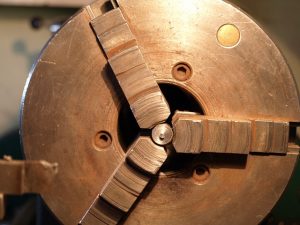
Manufacturing companies use dozens of machining processes to create products out of raw or semi-formed materials, some of the most common of which include turning and milling. Like other machining processes, they both require the use of a machine. With turning and milling, a machine is used to remove material from a workpiece, thereby changing the size and shape of the workpiece. So, what’s the difference between turning and milling exactly?
What Is Turning?
Turning a machining process where a machine — typically a lathe — removes material from a rotating workpiece with a cutting tool. With turning, the workpiece moves while the cutting tool remains stationary.
Boring is another machining process that involves the use of a lathe. With both boring and turning, the lathe’s stationary cutting tool presses against a rotating workpiece. The difference is that turning is designed to remove material from the exterior of a workpiece, whereas boring is designed to remove material from the interior of a workpiece. Boring, for instance, can be used to enlarge pre-drilled holes in a workpiece by removing material from the hole’s inner walls.
What Is Milling?
Milling, on the other hand, is a machining process where a machine — typically a milling machine — removes material from a stationary workpiece with a rotating cutting tool. The principle behind this machining process is similar to that of turning: a cutting tool presses against a workpiece, thereby removing material from it. The main difference between these two machining processes lies in their use of rotation. In turning operations, the workpiece rotates. In milling operations, the cutting tool rotates.
There are two main classifications of milling operations: face and peripheral. Face milling is characterized by a cutting action at or near the corners of the cutting tool. In comparison, peripherals milling is characterized by a cutting action along the diameter of the cutting tool. Whether it’s face or peripheral, however, all milling operations involve the rotation of the workpiece. The cutting tool used in milling operations does not rotate. Rather, it remains stationary at all times.
In Conclusion
Turning and milling are two common machining processes that remove material from a workpiece with the assistance of a cutting tool. While similar, though, they use different methods to achieve this goal. Turning forces the workpiece to rotate, whereas milling forces the cutting tool to rotate. With different mechanism, they each offer unique advantages when used in the manufacturing industry.
